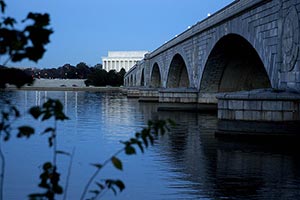State DOTs Raise Concerns About Funding to Maintain, Improve Bridges

Inadequate funding is hampering state departments of transportation and local agencies as they try to maintain or improve the condition of the bridges for which they’re responsible. That was the main conclusion of a report issued last month by the U.S. Government Accountability Office.
The report noted that the average age of the nation’s highway bridges is 45 years old. With a design life of 50 years, many are nearing the end of their intended service period.
"The challenge of aging bridges is intertwined with the challenge of inadequate funds," the GAO said.
DOT officials from 14 of the 24 states and the District of Columbia interviewed by GAO staff about their bridge programs raised concerns about not having sufficient funds to meet growing needs.
According to the report, the Massachusetts DOT funds only the most urgent priorities and does not have the luxury of planning far into the future. Washington State DOT officials are forced to choose which bridges need to be funded and which ones to delay.
The Louisiana Department of Transportation & Development reported a $12 billion backlog of bridge and roadway projects, many on interstate highways. The state also expects to exceed the maximum threshold of 10% of structurally deficient bridge deck area within 10 years.
Kansas officials said that because maintenance costs rise over time, the needs for preserving bridges could surpass available funds sooner rather than later. Rhode Island’s DOT projected that, at current funding levels, 40-50% of the state’s 766 bridges would be structurally deficient in 20 years.
The GAO said officials from six of the 10 local agencies interviewed also reported inadequate funding.
Seattle officials said that Washington’s DOT distributes about $35 million per year in federal funds to local agencies. However, the city's highest-priority bridge has a replacement cost of about $350 million, which far surpasses what they may receive. Given those massive gaps in funding, Seattle might be forced to close large bridges that are deemed unsafe.
Texas DOT officials were among those who are concerned about the effects of commercial trucks on their bridges.
“Many of [Texas’] bridges were not designed for some of the truckloads now using bridges, such as agricultural or energy sector trucks," the GAO reported.
Five state DOTs told the GAO that lengthy environmental permitting delays are a challenge.
In the report’s summary, the GAO said that, while bridge conditions generally improved nationwide over the past decade, "the increase in the number and size of bridges that are approaching the limits of their design life will likely place a greater demand on bridge owners in the near future, making it more difficult to mitigate issues in a cost-effective manner."
The GAO recommended that the Federal Highway Administration develop efficiency measures to demonstrate the linkage between federal bridge funding and maintained or improved bridge conditions and report that information to Congress.



